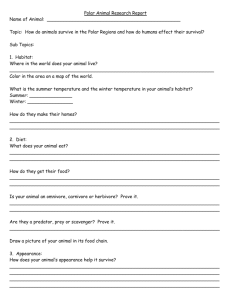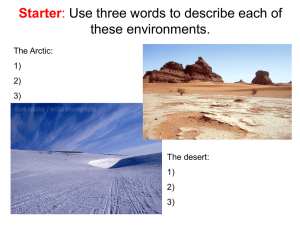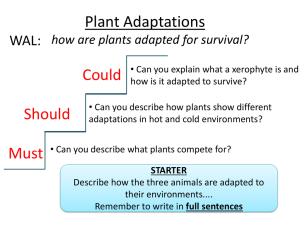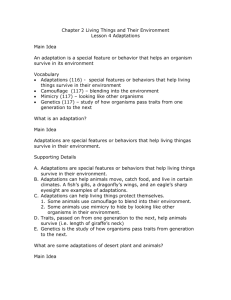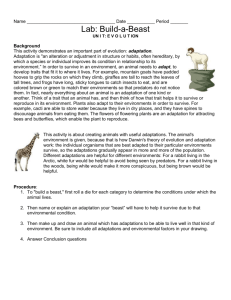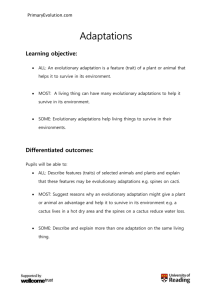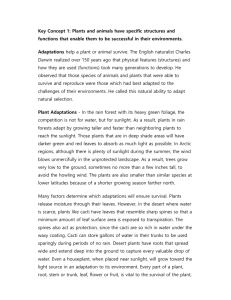Plant Adaptations Continued
advertisement
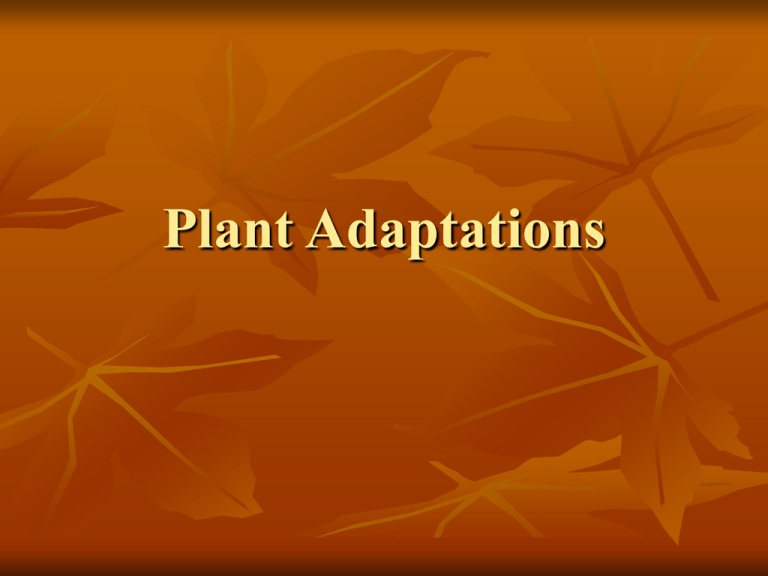
Plant Adaptations Core Content Biological Science SC-04-3.4.1 Students will: compare the different structures and functions of plants and animals that contribute to the growth, survival and reproduction of the organisms; make inferences about the relationship between structure and function in organisms. Plant Adaptations Adaptations – a structure of function that helps a plant or animal survive in its environment. Plant Adaptations for Different Environments Plants are found all over earth’s surface. Plants have special adaptations, like animals, that help them survive in their environment. Most of the plants you’ve seen live on land. Some plants have special adaptations that help them live in water. Plant Adaptations Continued Water Lilies are adapted to live in water. Roots take in nutrients and water from the muddy bottom. Plant stems grow toward the surface, taking along the leaves, which are rolled up like tubes. At the surface, leaves unroll to form flat pads. They are ready to take in sunlight and carbon dioxide. Plant Adaptations Continued Vines often grow on forest floors, where the light id dim. To reach sunlight, they have long stems with adaptations for clinging to other objects for support. These adaptations help them climb fences, walls, rocks, and even other plants. Kudzu is a vine commonly seen in Kentucky. Plant Adaptations Continued Cacti and other desert plants can survive with very little water. They can go months and years without rain. Cacti can survive dry spells because they have thick stems to store water. When it finally does rain, the Cacti’s roots can collect water quickly because they go just below the ground. This is a saguaro cactus, the tallest species of cactus. Lets Review Name one plant that is specially adapted to survive in its environment. Explain what adaptations the plant has that helps it survive in its environment.


